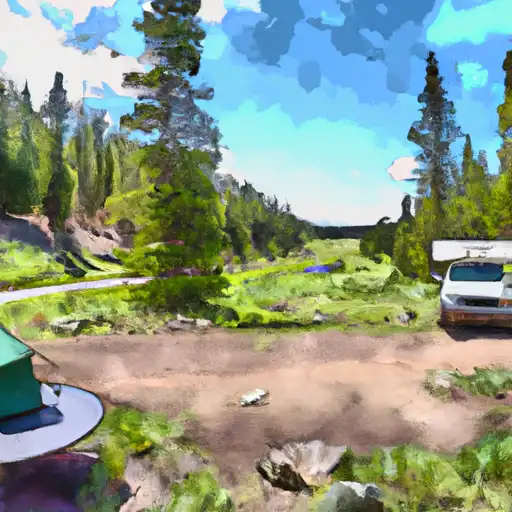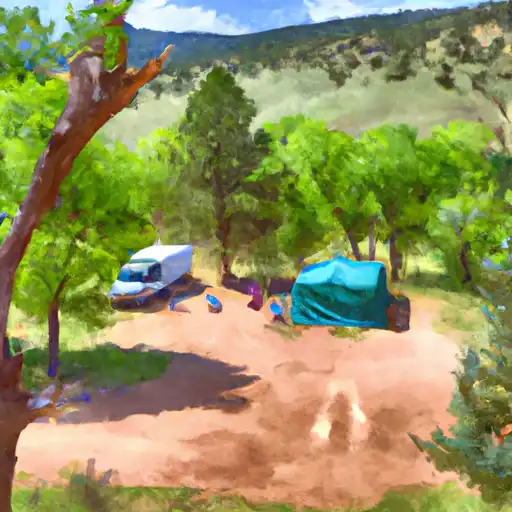Summary
This vast wilderness area offers numerous reasons to visit, including its stunning landscapes, diverse wildlife, and a wide range of recreational activities.
One of the main attractions in Wilderness Flat Tops is the scenic beauty of its alpine meadows, deep canyons, and towering peaks. The area is particularly known for its unique flat-topped mountains, which provide stunning panoramic views. Visitors can also explore the many crystal-clear lakes and rivers that dot the landscape, offering excellent opportunities for fishing, kayaking, and paddleboarding.
Wilderness Flat Tops is home to a rich variety of wildlife, including elk, deer, bear, mountain lions, and a plethora of bird species. Wildlife enthusiasts will have the chance to observe these animals in their natural habitats and capture incredible photographs.
Several points of interest within the Wilderness Flat Tops include the Devil's Causeway, a narrow land bridge with steep drops on either side that provides a thrilling hiking experience. Trappers Lake, also known as the "Cradle of Wilderness," is another must-see location, known for its scenic beauty and abundant fish population. Additionally, visitors can explore the numerous trails throughout the region, such as the East Fork Trail and the Chinese Wall, which offer breathtaking views and challenging hikes.
Interesting facts about Wilderness Flat Tops include its designation as the second-largest wilderness area in Colorado, spanning over 235,000 acres. The area is also known for the rich history of Ute Native Americans, who once inhabited this land and left traces of their heritage behind.
The best time to visit Wilderness Flat Tops largely depends on personal preferences and the desired activities. Summer (June to September) offers mild weather, longer days, and access to high-elevation hikes and camping. Autumn (September to November) brings stunning fall colors and fewer crowds. Winter (December to February) offers opportunities for snowshoeing, cross-country skiing, and wildlife tracking. However, it's important to note that winter conditions can be harsh and access may be limited. Spring (March to May) provides milder temperatures and the chance to witness the area's vibrant wildflowers blooming.
To ensure accuracy, it is recommended to verify all information across multiple independent sources, including official park websites, travel guides, and local tourism sources.
Weather Forecast
Park & Land Designation Reference
Large protected natural areas managed by the federal government to preserve significant landscapes, ecosystems, and cultural resources; recreation is allowed but conservation is the priority.
State Park
Public natural or recreational areas managed by a state government, typically smaller than national parks and focused on regional natural features, recreation, and education.
Local Park
Community-level parks managed by cities or counties, emphasizing recreation, playgrounds, sports, and green space close to populated areas.
Wilderness Area
The highest level of land protection in the U.S.; designated areas where nature is left essentially untouched, with no roads, structures, or motorized access permitted.
National Recreation Area
Areas set aside primarily for outdoor recreation (boating, hiking, fishing), often around reservoirs, rivers, or scenic landscapes; may allow more development.
National Conservation Area (BLM)
BLM-managed areas with special ecological, cultural, or scientific value; more protection than typical BLM land but less strict than Wilderness Areas.
State Forest
State-managed forests focused on habitat, watershed, recreation, and sustainable timber harvest.
National Forest
Federally managed lands focused on multiple use—recreation, wildlife habitat, watershed protection, and resource extraction (like timber)—unlike the stricter protections of national parks.
Wilderness
A protected area set aside to conserve specific resources—such as wildlife, habitats, or scientific features—with regulations varying widely depending on the managing agency and purpose.
Bureau of Land Management (BLM) Land
Vast federal lands managed for mixed use—recreation, grazing, mining, conservation—with fewer restrictions than national parks or forests.
Related References
Area Campgrounds
| Location | Reservations | Toilets |
|---|---|---|
 Supply Basin Campground
Supply Basin Campground
|
||
 Supply Basin
Supply Basin
|
||
 Deep Lake
Deep Lake
|
||
 Deep Lake Campground
Deep Lake Campground
|
||
 White Owl
White Owl
|
||
 Meadow Ridge Campground
Meadow Ridge Campground
|
